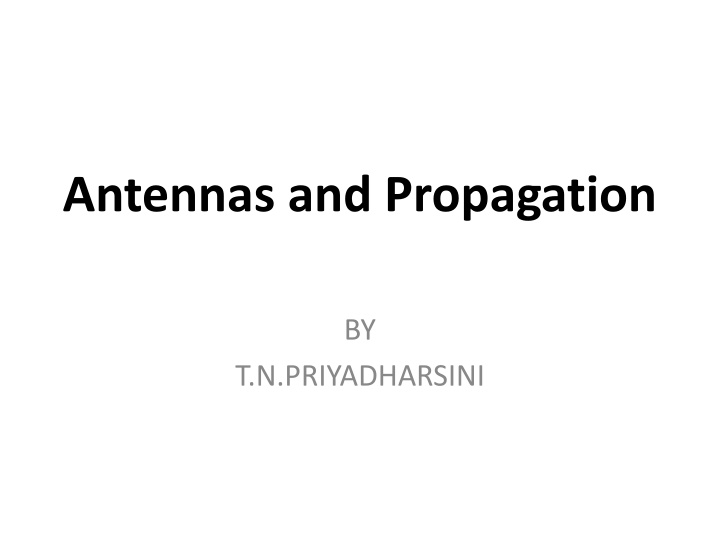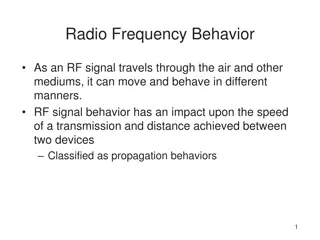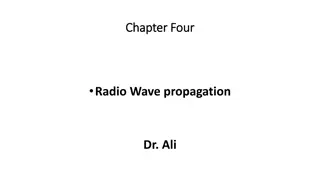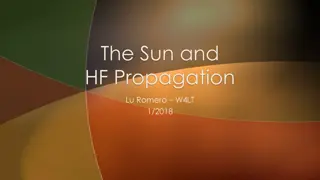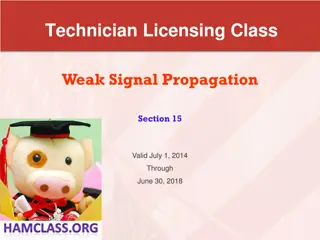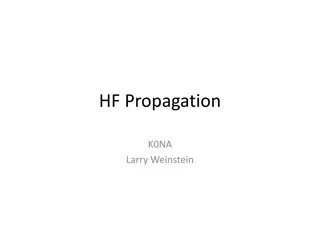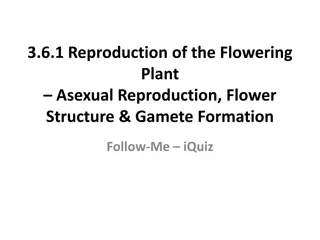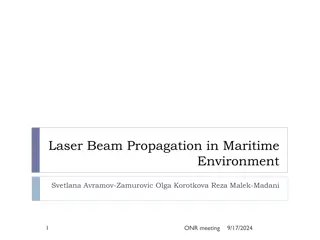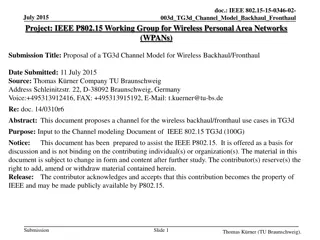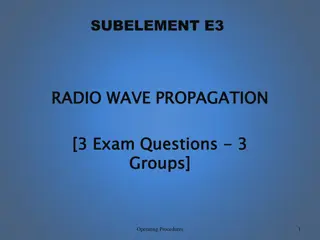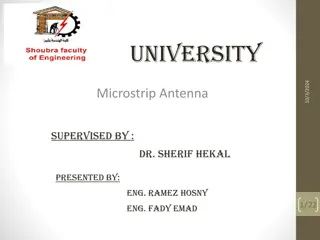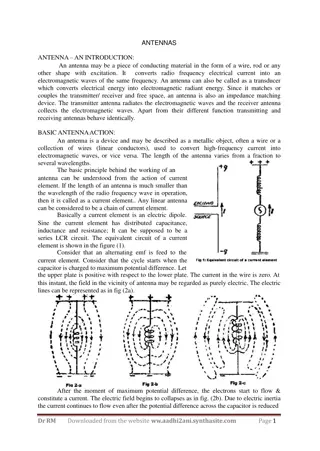Antennas and Propagation
the fundamentals of antennas and propagation, covering topics such as different antenna types, radiation patterns, gain, beam width, ground wave propagation, and sky wave frequency. Learn about isotropic antennas, dipole antennas, parabolic reflective antennas, antenna gain, and the characteristics of ground and sky wave propagation. Gain insights into how antennas transmit and receive electromagnetic energy, and the graphical representations of radiation properties. Discover the significance of effective area, power output, and directional antennas in two-way communication. Delve into the nuances of beam width, half-power width, and the behavior of waves in different frequencies."
Download Presentation

Please find below an Image/Link to download the presentation.
The content on the website is provided AS IS for your information and personal use only. It may not be sold, licensed, or shared on other websites without obtaining consent from the author.If you encounter any issues during the download, it is possible that the publisher has removed the file from their server.
You are allowed to download the files provided on this website for personal or commercial use, subject to the condition that they are used lawfully. All files are the property of their respective owners.
The content on the website is provided AS IS for your information and personal use only. It may not be sold, licensed, or shared on other websites without obtaining consent from the author.
E N D
Presentation Transcript
Antennas and Propagation BY T.N.PRIYADHARSINI
Antennas An antenna is an electrical conductor or system of conductors Transmission - radiates electromagnetic energy into space Reception - collects electromagnetic energy from space In two-way communication, the same antenna can be used for transmission and reception
Radiation Patterns Graphical representation of radiation properties of an antenna Depicted as two- dimensional cross section Beam width (or half-power beam width) Measure of directivity of antenna Reception pattern Receiving antenna s equivalent to radiation pattern
Antenna Types Isotropic antenna (idealized) Dipole antennas Radiates power equally in all directions. Dipole antennas Half-wave dipole antenna (or Hertz antenna) Quarter-wave vertical antenna (or Marconi antenna) Parabolic Reflective Antenna
Antenna Gain Antenna gain Effective area Power output, in a particular direction, compared to that produced in any direction by a perfect omnidirectional antenna (isotropic antenna) Effective area Related to physical size and shape of antenna
Beam Width (Half-Power Width) Is the angle within which the power radiated by the antenna is at least half of what is in the most preferred radiation position. Directional Antenna: Power radiated in the direction of B is greater than that radiated in the direction of A
Ground Wave Propagation Follows contour of the earth Can Propagate considerable distances Frequencies up to 2 MHz Example AM radio
Ground Wave Frequency Below 2 MHz Slowed down wave front due to EM current induced into the earth. (downwards tilt) Suffer from difraction and scattering from the atmosphere Classical Example: AM radio
Sky Wave Frequency Signal reflected from ionized layer of atmosphere back down to earth Signal can travel a number of hops, back and forth between ionosphere and earth s surface Reflection effect caused by refraction Examples Amateur radio CB radio
Line-of-Sight Propagation Transmitting and receiving antennas must be within line of sight Satellite communication signal above 30 MHz not reflected by ionosphere Ground communication antennas within effective line of site due to refraction Refraction bending of microwaves by the atmosphere Velocity of electromagnetic wave is a function of the density of the medium When wave changes medium, speed changes Wave bends at the boundary between mediums.
